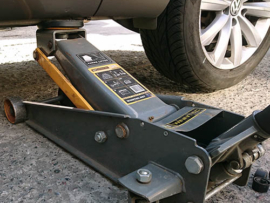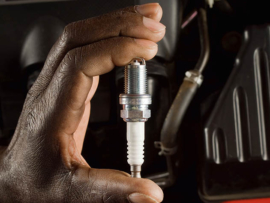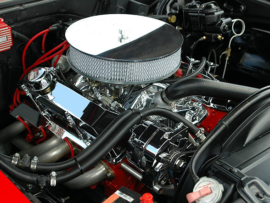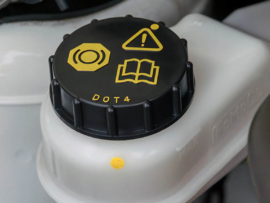P0161 – Heated Oxygen (O2) Sensor Heater Circuit Malfunction (Sensor 2, Bank 2)
DTC P0161 is an OBD-II code refers to a specific problem with the oxygen sensor, also known as the O2 sensor, on bank 2, sensor 2. Bank 2 refers to the side of the engine that does not contain the #1 cylinder, and sensor 2 is the downstream oxygen sensor located after the catalytic converter. The primary function of the downstream oxygen sensor is to monitor the efficiency of the catalytic converter (find cleaning additives by link) and ensure it is effectively reducing harmful emissions.
Code P0161 is triggered when the ECM detects a malfunction in the heater circuit of the downstream oxygen sensor on bank 2. The heater circuit is responsible for bringing the sensor to its operating temperature quickly, allowing it to provide accurate readings to the ECM. If the heater circuit is not functioning correctly, the sensor may take longer to reach its operating temperature or may not reach it at all. This can result in inaccurate readings.
Fixes for OBD-II Code P0161
Fixing DTC P0161 involves several steps to diagnose and resolve the issue with the downstream oxygen sensor’s heater circuit on bank 2. Here’s a step-by-step guide to address the problem:
- Check the fuse. Start by inspecting the fuse related to the oxygen sensor heater circuit. A blown fuse can cause the heater circuit to malfunction. If the fuse is blown, replace it with a new one of the correct rating.
- Inspect the wiring and connectors. Thoroughly examine the wiring and connectors related to the downstream oxygen sensor on bank 2. Look for any signs of damage, corrosion, or loose connections. Repair or replace any damaged wires or connectors as necessary.
- Test the oxygen sensor. Use a digital multimeter to test the downstream oxygen sensor on bank 2. Check the sensor’s resistance to ensure it falls within the manufacturer’s specified range. If the resistance is outside the acceptable range, the sensor may need replacement.
- Test the heater circuit. Verify that the heater circuit is receiving power and ground correctly. Use a multimeter to check for voltage at the sensor’s heater circuit connector. If there is no power, trace the circuit back to find the source of the issue, which could be a faulty relay or a wiring problem.
- Replace the downstream oxygen sensor. If the sensor or its heater circuit is found to be faulty, replace the downstream oxygen sensor with a new, compatible one. It is recommended to use an OEM (original equipment manufacturer) or high-quality aftermarket sensor to ensure accurate readings and proper functionality.
- Clear the codes and perform a road test. After completing the repairs, clear the trouble codes using a scan tool. Take the vehicle for a road test to ensure that the issue is resolved, and the check engine light does not reappear.
Note: If you are struggling with any operations, it’s best to have a qualified mechanic or technician perform the troubleshooting and fixes for DTC P0161 to ensure accurate and effective resolution.
Related DTCs to P0161
There are some codes that likely would have been shown along with the aforementioned code: P0030, P0036, P0050, P0053, P0054, P0056, P0059, P0060, P0135, P0141, P0155.
FAQs
How much does it cost to fix DTC P0161?
The cost to fix the OBD-II code P0161 can vary depending on several factors, such as the make and model of the vehicle, the location of the repair shop, and whether you choose to use original equipment manufacturer (OEM) parts or aftermarket parts. Additionally, the extent of the issue and any other related problems found during diagnosis can also impact the overall cost.
In general, the cost to fix DTC P0161 may range from $150 to $500 on average. This estimate includes the cost of diagnosing the issue, labor charges, and the cost of replacing the downstream oxygen sensor on bank 2, if that is the primary cause of the code.
Can I continue driving with the P0161 code?
Driving with the OBD-II P0161 code is not recommended, especially for an extended period. If the downstream sensor on Bank 2 isn’t functioning correctly, it can lead to increased emissions, reduced fuel efficiency, and potential damage to the catalytic converter.
Is the code P0161 serious?
Yes, the code P0161 is considered serious, and it should not be ignored. For several reasons, it is crucial to address this DTC as soon as possible.
We do an efforts to find, research and recommend the best products. So, we may receive commissions from purchases that you make after following the links in our product reviews.








Leave A Comment